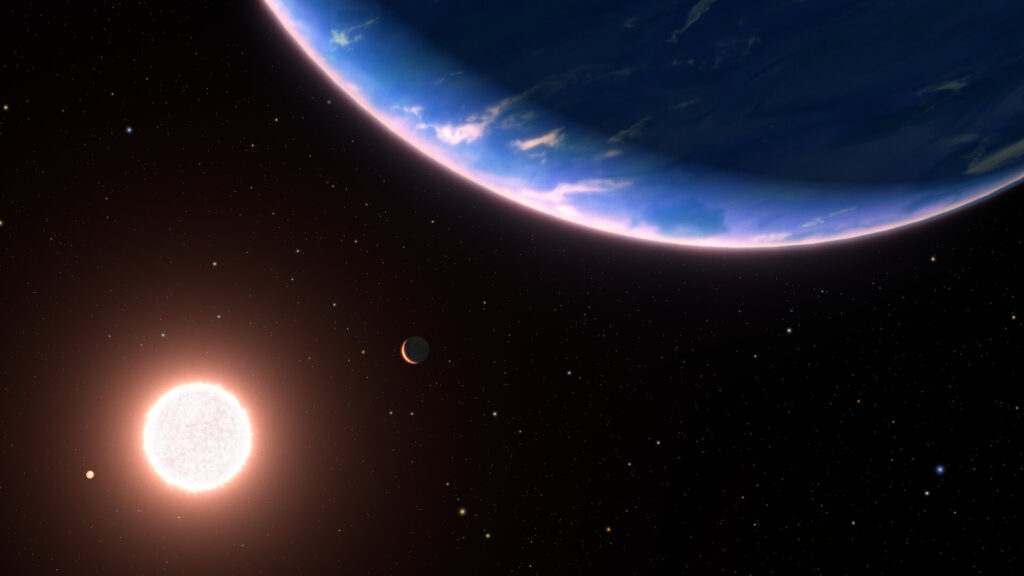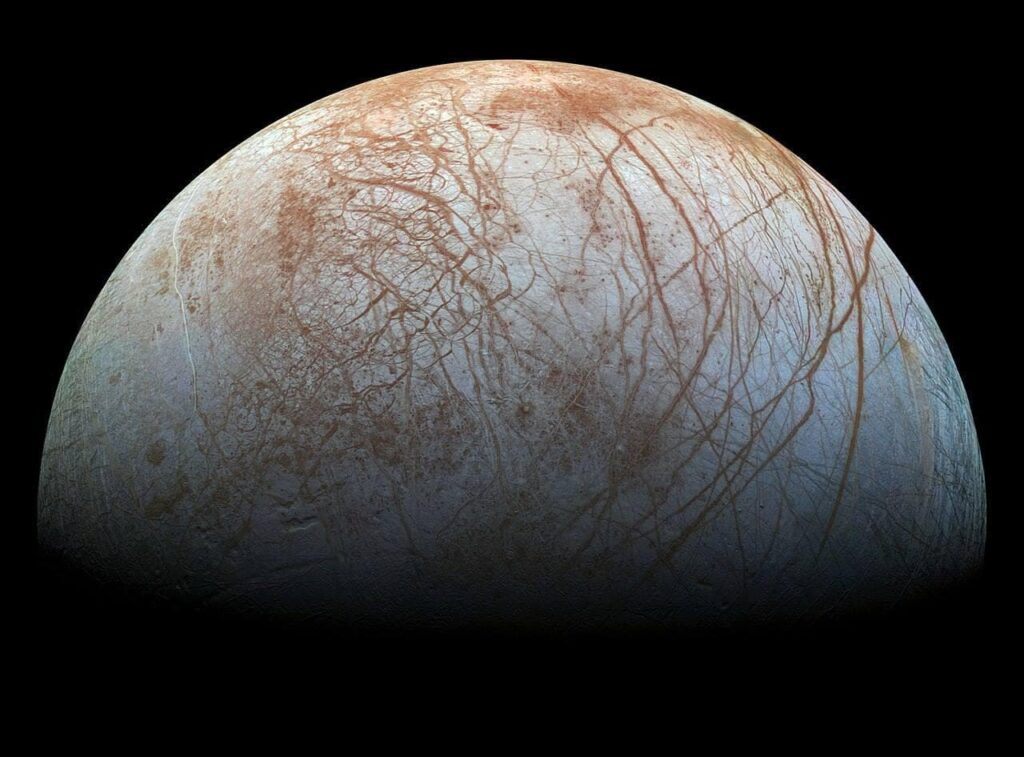Using the Hubble telescope, astronomers have discovered water vapor in the atmosphere of the exoplanet GJ 9827d. To date, this is the smallest extrasolar world where such a find has been made.
Finding water vapor
GJ 9827d was discovered by the Kepler telescope in 2017. It is a super-Earth that has a diameter twice the diameter of our planet. GJ 9827d orbits a red dwarf located 97 light-years from Earth. The exoplanet makes one orbit around its star in 6.2 days. Due to its proximity, it is hardly a favorable place to live. According to astronomers, its temperature is about 425 °C.

But, although there is hardly any life on GJ 9827d, it is still of considerable interest to researchers. They chose an exoplanet for a project aimed at finding traces of water vapor in its atmosphere. In total, Hubble conducted observations of 11 transits of GJ 9827d. Astronomers tried to isolate from the data collected by the telescope the light that passed through the atmosphere of the exoplanet and carried the spectral imprint of water molecules.
These efforts were successful. Astronomers actually managed to find water vapor in the atmosphere of GJ 9827d. This is the smallest exoplanet where such a find has been made.
Is it a mini-Neptune or a hot analogue of Europa?
At the same time, researchers have not yet been able to answer the question of what the atmosphere of this world is in general. They have two main versions. According to one, Hubble could measure a small amount of water vapor in a hydrogen-rich atmosphere. In this case, this world can be classified as a mini-Neptune.
According to the second, the atmosphere of GJ 9827d consists mainly of water left over after the primitive hydrogen-helium atmosphere evaporated under the influence of stellar radiation. In this case, this world is a warmer version of Jupiter’s moon Europa. It can be a rocky body wrapped in a thick shell of water vapor.

But whatever the answer, Hubble’s discovery opens the way to a more detailed study of both this and other similar worlds. It can be a good target for the James Webb Space Telescope.
According to https://esahubble.org
Follow us on Twitter to get the most interesting space news in time
https://twitter.com/ust_magazin


